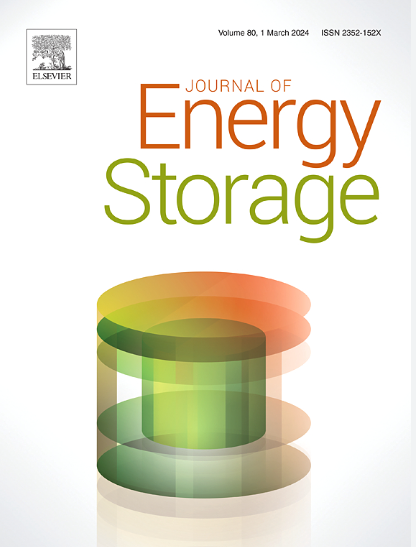Interface engineering of Si/C microparticles with Al2O3 layer enabling high-areal-capacity lithium-ion batteries
IF 8.9
2区 工程技术
Q1 ENERGY & FUELS
引用次数: 0
Abstract
Silicon (Si)-based anode materials have been regarded as a viable alternative to replace traditional graphite owing to its high theoretical capacity. Nevertheless, the industrial production of Si nanoparticles (Si NPs) is hindered by low tap density and inferior areal capacity. Here, the hard carbon supported Si NPs are encapsulated by soft carbon and Al2O3 to fabricate HC@Si@SC@A sample for high performance lithium-ion batteries (LIBs). Micrometer-sized HC serves as size regulator for Si NPs and SC serves to improve electric conductivity and suppress volume changes. With the existence of Al2O3, a thin and inorganic components-rich solid electrolyte interphase (SEI) has formed, greatly maintaining the stability of electrode during cycling. Therefore, the HC@Si@SC@A anode delivers an ultrahigh discharge capacity of 14.5 mAh cm−2 at 0.2 A g−1. It can show excellent performance as an anode of full cells with the NCM811 as the cathode material.

高面积容量锂离子电池用硅/碳微粒与Al2O3层的界面工程
硅基负极材料由于具有较高的理论容量而被认为是替代传统石墨的可行选择。然而,硅纳米颗粒(Si NPs)的工业生产受到低丝锥密度和较差的面积容量的阻碍。本文采用软碳和Al2O3包覆硬碳负载的Si NPs,制备了高性能锂离子电池(LIBs) HC@Si@SC@A样品。微米级的HC作为Si NPs的尺寸调节剂,SC用于改善电导率和抑制体积变化。由于Al2O3的存在,形成了一层薄而富含无机成分的固体电解质界面(SEI),极大地维持了电极在循环过程中的稳定性。因此,HC@Si@SC@A阳极在0.2 A g−1时提供了14.5 mAh cm−2的超高放电容量。以NCM811为正极材料,可作为全电池的阳极,表现出优异的性能。
本文章由计算机程序翻译,如有差异,请以英文原文为准。
求助全文
约1分钟内获得全文
求助全文
来源期刊

Journal of energy storage
Energy-Renewable Energy, Sustainability and the Environment
CiteScore
11.80
自引率
24.50%
发文量
2262
审稿时长
69 days
期刊介绍:
Journal of energy storage focusses on all aspects of energy storage, in particular systems integration, electric grid integration, modelling and analysis, novel energy storage technologies, sizing and management strategies, business models for operation of storage systems and energy storage developments worldwide.
 求助内容:
求助内容: 应助结果提醒方式:
应助结果提醒方式:


